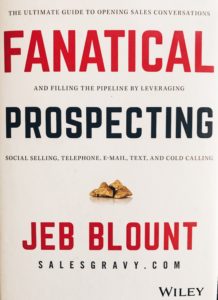
4 Lessons I Learned from a Long-term Sales Approach
“Hey, how about you try a different approach?” That’s the question I asked myself.
The majority of my sales experience comes from retail sales. I enjoyed the wireless industry, but I knew I didn’t want to spend my whole life in retail. Deciding to try something new, I made the transition from a B2C to B2B role.
I took a Client Success–or Account Management/Customer Success/another fancy name–role. This role differs from B2B revenue generating sales roles. Revenue generating roles focus on pre-sale and Client Success takes over post-sale. Client Success nurtures and grows the accounts. While the exact functions vary by company, my experience was very sales related.
I had the normal new job challenges. Learning about the business, industry, processes, and doing the actual day-to-day job function. The B2B world was different from what I had known. One difference was the sales cycle.
I dealt with 12 month, 9 month and 6 month length agreements. There was contact with customers throughout the length of the agreement. For simplicity, I’ll say my retail job had a 30-day sales cycle and my Client Success role had a 90-day sales cycle.
The process was different and I realized I needed to change my approach. I had to change from a short-term approach to a long-term approach.
Here are 4 lessons I learned.
1) Addressing Problems
Hitting quota is the goal. I focused on current month renewals because of….well quota. I knew I should be contacting upcoming renewals–90, 60, and 30 days out from renewal. I’d say I would get to them later. Then later. And later. Now it’s a new month. A new crop of renewal customers. A new set of problems I was unaware of.
A long-term approach gave me the gift of time. It sounded something like this:
*Ring ring*
Me: Hi, Scott. This is Michael from ABC Company. Am I catching you at the worst time?
Customer: No, I’ve got some free time. What’s going on?
Me: Great. Well, I’m giving you a call because you’re entering the final quarter of your advertising campaign. I was hoping to discuss how successful your current campaign has been and what changes, if any, need to be made for the upcoming year. Sound good?
Customer: Well Michael, let me tell you how it’s been. Not successful at all. It’s not working!
Me: Oh really? Well, I’m glad I called. Can you tell me more about why things haven’t been working?

Sometimes, it wasn’t going great or they had no idea. Other times they couldn’t be happier. No matter how great or bad things were, a long-term approach allowed time to address any problems–or continue to make great results better.
2) Time/Call Blocking
“I’m such a multi-tasker.” No, you’re just distracted.
I often found myself jumping back and forth between different tasks in my CRM, e-mail, and other tools. A new e-mail popped up. An inbound call needed something done immediately–that wasn’t really urgent. While on that call, a current renewal left a voicemail. Now, that’s urgent. I was a pinball getting hit all over the place.
Once I started blocking time to work on certain tasks, I became more efficient. I got into a flow by setting time and call blocks. Whether it was a renewal appointment scheduling block or a 90-day pre-eligibility block, I had the same mindset and talk track. I’d pull up the specific Salesforce report, sort by days since the last call, and get to dialing. I was more productive.
3) Prospecting: 30-Day Rule
The first book I read this year was Fanatical Prospecting by Jeb Blount. If you’re in B2B sales, I would recommend reading it. It’s a great read!
Jeb talks about the 30-Day Rule in the book. When I read what the 30-Day Rule was all I could do was nod my head and empathically repeat YES! What is it? It says that the prospecting done in a 30-day period will pay off for the next 90 days. It further implies that missing a day of prospecting will come back to get you in the next 90 days.
This rule applies to a Client Success role. Not making those pre-eligibility calls came back to get me in the renewal month.
4) Working a 15th to 15th month
This means hitting goal (or extremely close) by the 15th of the month. Now, I wasn’t hitting goal by the 15th, every single month. The work I did in the previous months allowed my process to progress to this approach. This tied directly back to the 30-day rule and it was a bit of a bonus.
I addressed problems earlier. Made action plans to fix and turn things around. Created next steps with customers leading into the renewal month. For customers that things were going great with, I closed them a month or two in advance. Starting the 1st of the month with runs on the scoreboard gave me a mental boost.
I forecasted better because I had a better grasp of where customers were. I had a clearer picture of my pipeline and set pricing expectations with customers. When you hit goal in the middle of the month, you sell differently. You hold firm on pricing for customers waiting until the end of the month for discounts. When you’re in a place to say, within reason, “Mr. Customer I want your business, but don’t need it.”–game changer.
Sales is a profession of continual learning and adjusting your approach. It doesn’t matter how many years of experience you have. What you learn and take action on now–will pay off in the long-term.
Recommended Book Amazon Link: Fanatical Prospecting by Jeb Blount

